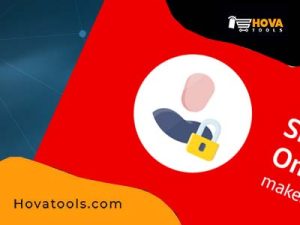Bank login access
Introduction
Bank login access is a secure way for account holders to manage their finances online. It allows users to access their accounts from anywhere with an internet connection, making it a convenient way to stay on top of their finances. However, it is important to understand how to access bank login credentials safely and securely to protect against unauthorized access.
Types of Bank Login Access
There are two types of bank login access: direct and indirect. Direct access involves logging in directly to the bank’s website or mobile app using your login credentials. Indirect access involves using third-party services, such as personal finance apps or financial aggregators, to access your account information.
Best Selling Bank Logins
-
- China
China Citic Bank Login
- $180.00 – $500.00
- Select options This product has multiple variants. The options may be chosen on the product page
-
- China
China Merchants Bank Login
- $180.00 – $600.00
- Select options This product has multiple variants. The options may be chosen on the product page
-
- China
China Minsheng Bank Login
- $180.00 – $600.00
- Select options This product has multiple variants. The options may be chosen on the product page
-
- China
Hua Xia Bank Login
- $180.00 – $600.00
- Select options This product has multiple variants. The options may be chosen on the product page
These are the details we will give you for login and other purposes after you have bought bank account logins.
Username | Password | Security Questions | Answers | Email Access | Holder Name | Number Account | Bank Name | Phone Number | Address | Date | Mother Maiden’s Name | CVV2Username | Password | Security Questions | Answers | Email Access | Holder Name | Number Account | Bank Name | Phone Number | Address | Date | Mother Maiden’s Name | CVV2
How to Access Bank Login Credentials
To access your bank login credentials, follow these steps:
1. Go to the Bank’s Website or Mobile App
Open your web browser or mobile app and go to the bank’s website or download their mobile app.
2. Enter Your Login Credentials
Enter your login credentials, which typically include a username and password. Some banks may also require additional security measures, such as a security question or two-factor authentication.
3. Navigate to Your Account Dashboard
Once you are logged in, navigate to your account dashboard to view your account information, such as your account balance, transaction history, and payment due dates.
How to Access Bank Login Credentials Safely
To access your bank login credentials safely, it is important to take the following precautions:
1. Use Secure Devices and Networks
Only access your bank login credentials from secure devices and networks, such as your personal computer or mobile device and a trusted Wi-Fi network.
2. Use Strong Passwords
Use strong and unique passwords for all your online accounts, including your bank account. A strong password should be at least eight characters long, contain a mix of uppercase and lowercase letters, numbers, and special characters.
3. Enable Two-Factor Authentication
Enable two-factor authentication, which provides an additional layer of security by requiring the user to provide a second form of identification, such as a fingerprint or a code sent to their mobile device, before logging in.
4. Keep Your Credentials Secure
Never share your bank login credentials with anyone, including family members or friends. Use secure methods to store your passwords, such as a password manager or encrypted document.
5. Monitor Your Accounts
Regularly monitor your bank accounts for any suspicious activity. Report any unauthorized transactions to your bank immediately.
Conclusion
Bank login access is a convenient and secure way for account holders to manage their finances online. However, it is important to take precautions to protect against unauthorized access. By using secure devices and networks, using strong passwords, enabling two-factor authentication, keeping your credentials secure, and monitoring your accounts, you can reduce the risk of becoming a victim.
FAQs
Can I access my bank login credentials from any device?
It is recommended to only access your bank login credentials from secure devices and networks, such as your personal computer or mobile device and a trusted Wi-Fi network.
What should I do if I suspect unauthorized access to my bank account?
Contact your bank immediately to report any suspicious activity and change your login credentials.
Is indirect bank login access safe?
Indirect bank login access, such as using personal finance apps or financial aggregators, can be safe if you use trusted and reputable services. However, it is important to understand the risks and take precautions to protect your account information.
Can I share my bank login credentials with family members or friends?
No, it is never safe to share your bank login credentials with anyone. Use secure methods to store your passwords, such as a password manager or encrypted document.
How often should I monitor my bank accounts?
It is recommended to monitor your bank accounts regularly, such as once a week or once a month, to ensure that there is no suspicious activity. However, it is also a good idea to check your accounts immediately after any major transactions or changes to your account information.
What should I do if I forget my bank login credentials?
If you forget your bank login credentials, you can usually reset them by following the bank’s password reset process. This typically involves answering security questions or providing additional information to verify your identity.
Final Thoughts
Bank access is a valuable tool for managing your finances, but it is important to understand how to access your login credentials safely and securely. By following these tips and taking precautions to protect your account information, you can ensure that your bank access is always secure and convenient.
Don’t Know How to Use Bank Logins? Buy Instant Money Transfer Services

Contact
We are always available to take your orders 24/7. CONTACT US









